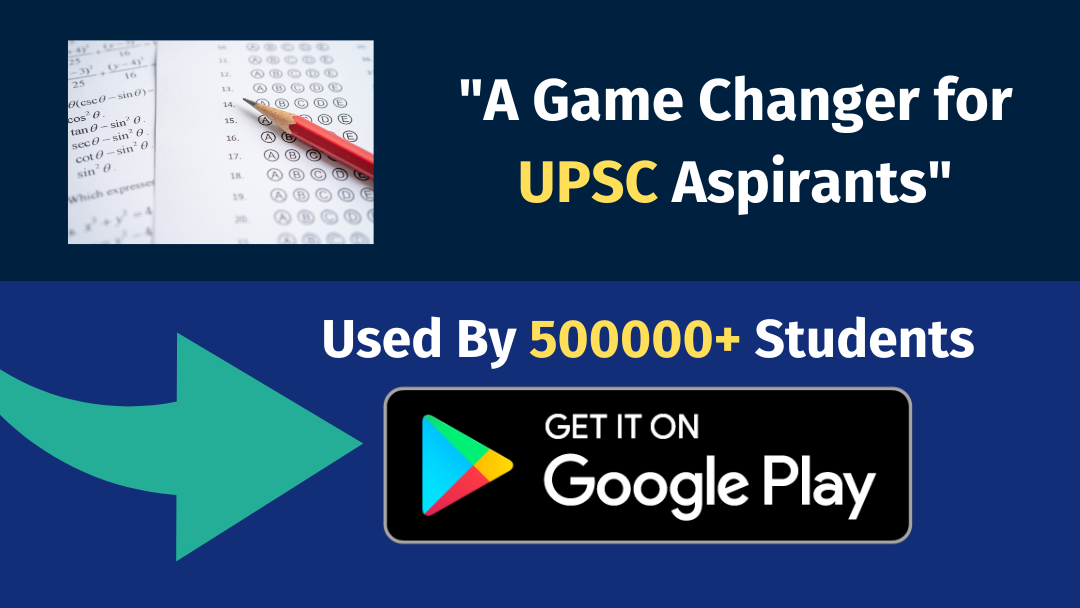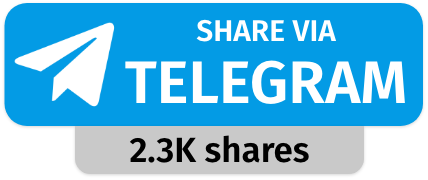Today’s Current Affairs: 6th August 2025 for UPSC IAS exams, State PSC exams, SSC CGL, State SSC, RRB, Railways, Banking Exam & IBPS, etc
Table of Contents
Lalit Kala Akademi:

The 64th National Exhibition of Art (NEA), organized by the Lalit Kala Akademi, India’s National Academy of Art, was recently inaugurated in New Delhi with a grand ceremony.
- Lalit Kala Akademi, National Academy of Art, New Delhi, was set up by the Government of India as an autonomous body, on 5th August, 1954, to promote and propagate understanding of Indian art, in and outside the country.
- It was inaugurated on 5th August 1954 by the then Minister for Education, Maulana Abul Kalam Azad.
- The Akademi was given the status of statutory authority in 1957, under the Societies Registration Act 1860.
- Headquarters: New Delhi.
- It functions through its General Council, Executive Board, and other Committees.
- It has regional centres situated at Chennai, Lucknow, Kolkata, Bhubaneswar, Garhi.
- It is funded by the Ministry of Culture.
- The institution has been involved in identifying and showcasing visual art.
- It has preserved and documented a permanent collection of the highest order that reflects the vitality, complexity, and unfolding patterns of contemporary, modern, folk, and tribal art in India.
- It promotes the Visual Art of India in various countries of the world through Cultural Agreements and Cultural Exchange Programmes.
- The National Exhibition of Art is the most prestigious annual event of the Lalit Kala Akademi.
- Begun in 1955, it is directed towards showcasing and representing visual advances in the year.
Defence Acquisition Council : In News
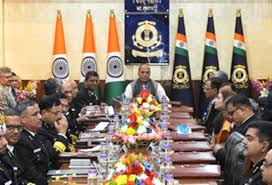
The Defence Acquisition Council (DAC) recently sanctioned multiple procurement proposals worth nearly ₹67,000 crore to strengthen the nation’s military preparedness.
- It is the highest decision-making body of the Defence Ministry on procurement.
- The main objective of the DAC is to ensure expeditious procurement of the approved requirements of the armed forces in terms of capabilities sought and time frame prescribed by optimally utilizing the allocated budgetary resources.
- It was formed after the Group of Minister’s recommendations on ‘Reforming the National Security System’, in 2001, post-Kargil War (1999).
- Composition:
- Chairman: Ministry of Defence
- Members:
- Minister of State for Defence
- Chief of Defence Staff (CDS)
- Chief of Army Staff (COAS)
- Chief of Naval Staff (CNS)
- Chief of Air Staff (CAS)
- Defence Secretary
- Secretary, Dept. of Defence Production and Supplies
- Secretary, Defence Research and Development
- Secretary, Defence Finance
- Vice Chief of Defence Staff (when appointed)/CISC
- Its functions include:
- Give in principle approval of a 15-year Long Term Integrated Perspective Plan (LTIPP) for defence forces.
- Accord of acceptance of necessity to acquisition proposals.
- Categorisation of the acquisition proposals relating to ‘Buy’, ‘Buy & Make’, and ‘Make’.
- Look into issues relating to single vendor clearance.
- Take decisions regarding ‘offset’ provisions in respect of acquisition proposals above Rs 300 crore.
- Take decisions regarding the Transfer of Technology under the ‘Buy & Make’ category of acquisition proposals.
- Field trial evaluation.
PAHAL (Direct Benefit Transfer for LPG) Scheme) : In News
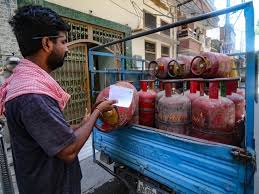
The Indian government has deactivated more than 4 crore duplicate or inactive domestic LPG connections under its PAHAL direct benefit transfer scheme.
- Pratyaksh Hanstantrit Labh/Direct Benefits Transfer For LPG (PAHAL) scheme, launched by the Ministry Of Petroleum and Natural Gas, is India’s Direct Benefit Transfer (DBT) system for LPG subsidies.
- Instead of subsidized cylinders being delivered directly, the consumer pays the full market price for LPG and the government transfers the subsidy amount to the registered bank account.
- It covers over 17 crore LPG consumers nationwide, making it the largest cash transfer program globally.
- Objectives:
- Ensures transparency and eliminates intermediaries.
- Removing incentives for diversion.
- Protect the entitlement and ensure the payment of subsidy to the consumers.
- Improving the availability or delivery of LPG cylinders for genuine customers.
- Eliminating the fake or duplicate connections.
- Providing self-selection in subsidy.
- Eligibility:
- The applicant must be an LPG user.
- The combined taxable income of the applicant and their spouse should not exceed ₹10,00,000 in the previous financial year, as per the Income Tax Act, 1961.
- Working:
- The consumer books a gas cylinder at the market price.
- Once delivered, the government credits the subsidy amount directly into the linked bank account of the consumer.
- There are two types of consumers in the scheme:
- Primary Aadhaar-Based DBT (preferred): Aadhaar is linked with both the LPG consumer number and the bank account.
- Alternative (Non-Aadhaar-Based): Bank account is linked directly with the LPG consumer number if Aadhaar linking is not available.
Indri Lemur:
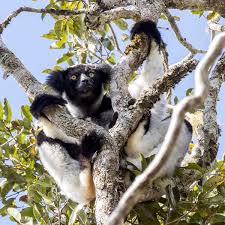
The composition of the intestinal microbiome of the Indri, a critically endangered lemur only found in the north-east of Madagascar.
- Indri, or babakoto in the local language, is the largest of the surviving lemur species.
- Scientific Name: Indri indri
- Found only in remote parts of northeastern Madagascar.
- Resides in coastal and montane rainforest from sea level to 1,800 m.
- It is 60–70 cm (24–28 inches) long, with a rudimentary tail and large hands and feet.
- The round head has a pointed face and round, furry ears.
- Indris have smooth, silky fur covering their whole bodies.
- Its fur is black, with white on the head, throat, forearms, and buttocks; the relative proportions of white and black vary geographically.
- In the wild, indris live between 15 and 18 years.
- Active during the day and thoroughly arboreal, the indri clings to trees and climbs in an upright position as it feeds on leaves, fruit, flowers, and other vegetation.
- Conservation Status: IUCN Red List: Critically Endangered.
India Cine Hub Portal:
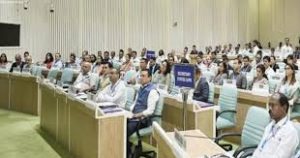
The Central Government urged States to use India Cine Hub Portal to facilitate Global film Production locally.
- India Cine Hub Portal was launched on June 28, 2024.
- It is a single-window system streamlining filmmaking permissions, incentives, and resource mapping across India.
- It was set up by the Ministry of Information & Broadcasting, Government of India in the National Film Development Corporation (NFDC) with a view to promote and facilitate film shootings by foreign filmmakers in India.
- It acts as a single-window facilitation and clearance mechanism that eases filming in India, as well as endeavouring to create a film-friendly ecosystem and promoting the country as a filming destination.
- It features GIS-based location mapping and a common application form, the portal enhances ease of doing business and promotes India as a global filming destination.
- Seven states and two Union Territories have fully integrated with the platform, while 21 states and six Union Territories have been on board.
- The services rendered by the India Cine Hub (ICH) have now been extended to Indian filmmakers as well.
Intermediate-Range Nuclear Forces (INF) Treaty:

Russia has officially declared it no longer considers itself bound by the Intermediate-Range Nuclear Forces (INF) Treaty.
- It was signed between the United States and Russia (Formerly known as the Soviet Union) in 1987.
- Under this treaty both powers agreed to destroy two categories of lethal missile systems from their own stocks as a means to decelerate the nuclear arms race.
- The need for such an expansive treaty was felt after a considerable build-up of missiles capable of carrying nuclear warheads by both sides in their European spheres of influence, threatening the security of the entire continent.
- The treaty came to fruition after years of negotiations during the leadership of US President Ronald Reagan and Soviet leader Mikhail Gorbachev.
- The treaty led to the elimination of an entire class of weapons, ground-launched missiles with a range of 500 to 5,500 kilometres.
- It also allowed verification by observers from both sides — thus leading to the dismantling of 2,619 missiles in three years.
- Present status of the treaty: The US withdrew from it, citing violations by Russia.
Leap-1 Mission:

A budding space tech startup Dhruva Space from India, is set to launch its first commercial satellite mission called LEAP-1.
- Leap-1 Mission is Dhruva Space’s first commercial satellite mission, which is carrying payloads for AI and Earth observation.
- It utilises Dhruva Space’s indigenously developed P-30 satellite platform which was successfully space-qualified during the LEAP-TD mission on ISRO’s PSLV-C58 in January 2024.
- It is developed by Dhruva Space and Australia-based Akula Tech and Esper Satellites.
- The mission carries two distinct payloads:
- Nexus-01: It features an advanced artificial intelligence (AI) module.
- The AI module promises unprecedented on-orbit intelligence with onboard data processing and AI/ML model re-training capabilities for rapid, near-real-time insights.
- AI flexibly supports applications such as fire detection and spectral analysis, continuously improving via live sensor data retraining.
- Esper Satellites’ OTR-2 mission is equipped with a cutting-edge hyperspectral imager.
- This hyperspectral imager delivers spectrally rich Earth observation data through their EarthTones API, setting a new standard in remote sensing technology.
- This payload fusion enhances capabilities across applications including defense, disaster response, agriculture, mining, and environmental monitoring.
CLOVES Syndrome:
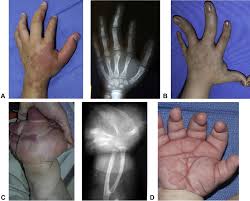
Researchers believe that CLOVES Syndrome is caused by mutations in a gene called PIK3CA and less than 200 cases are believed to have been reported worldwide.
- CLOVES Syndrome, in which the letters stand for: Congenital; Lipomatous; Overgrowth; Vascular malformations; Epidermal nevi and Spinal/skeletal anomalies/Scoliosis, is very rare condition.
- It is a rare genetic disorder.
- It is caused by mutations in a gene called PIK3CA which makes one of the proteins in an enzyme called PI3K, which is involved in many important functions in a cell.
- Mutations in the PIK3CA gene may cause the PI3K enzyme to become overactive, which may cause cancer cells to grow.
- PIK3CA gene mutations have been found in many types of cancer, including cancers of the breast, lung, ovary, stomach, brain, colon, and rectum.
- CLOVES Syndrome is an overgrowth disorder, part of a larger group of similar disorders called PIK3CA-related overgrowth spectrum or PROS.
- The mutations in the PIK3CA gene are believed to occur spontaneously in the womb.
- It is not hereditary and cannot be passed on.
- Symptoms of CLOVES Syndrome
- Growth of Soft masses of fatty tissue on the abdomen, back, sides and buttocks.
- Vascular or blood vessel anomalies such as dilated veins that may be seen in the chest, arms and legs and that may pose a risk of blood clots
- Large and wide hands or feet, with large gaps between fingers and toes; ‘port wine stain’ birthmarks;
- Spinal problems such as scoliosis or a tethered cord; kidney problems; skin abnormalities such as raised bumps,
- Treatment: There is no cure as yet for CLOVES syndrome. However, with the right diagnosis, healthcare providers can help patients manage symptoms.
Skill Impact Bonds:
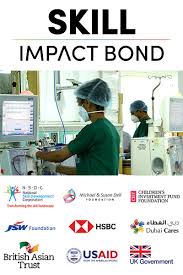
As India strives for economic growth and inclusive development, innovative models like the Skill Impact Bond (SIB) are emerging to address key challenges in skilling and employment, especially among marginalized communities and women.
- The Skill Impact Bond (SIB) 2025 report reveals that Jharkhand has the highest share of enrolled trainees, with women continuing to dominate enrolment in the apparel sector; however, gender-based pay disparities persist, despite improvements in female retention and placement rates.
- Skill Impact Bond (SIB) is India’s first Development Impact Bond (DIB), launched in 2021 focused on skills training and job placement.
- It shifts focus from enrollment to outcomes like placement and retention. It uses private-sector funding to address social and development challenges.
- Objective is to skill 50,000 youth, with 60% women, especially from marginalised and rural backgrounds, and ensure at least 30,150 retain jobs for 3+ months.
- Key Highlights of the SIB Report 2025:
- Top States: Jharkhand (27%), UP, Maharashtra, Odisha, and Telangana had highest enrollments.
- Popular Sectors:
- Women: Mainly trained in apparel, with rising numbers in retail, IT-enabled services (ITeS), and BFSI (banking, financial services, and insurance)
- Men: Moving from construction to sectors like automotive and telecom.
- Women-Led Skilling: Over 72% of 23,700+ trainees were women from vulnerable backgrounds. Female certification rate reached 92%, and job placement was 81%. Self-employment among women rose from 6% to 14%.
- Better Job Outcomes: 75% of all trainees got jobs, and 60% stayed employed for over 3 months—above national average. Female employment increased from 35% to 48%.
- Gender Pay Gap: Men earned more (Rs 12,400–15,700) than women (Rs 11,500–13,000) despite similar job outcomes.
Agnishodh and Project SAMBHAV:
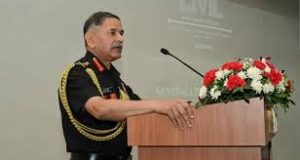
Chief of the Army Staff (COAS), General Upendra Dwivedi, inaugurated ‘Agnishodh’, the Indian Army Research Cell (IARC), at the IIT Madras campus. The COAS also highlighted Project SAMBHAV (Secure Army Mobile Bharat Vision) as a key tech initiative for secure communication.
- Agnishodh serves as a bridge between academic research and military needs, converting lab-scale innovations into field-ready defence technologies.
- It is aligned with Indian Army Five Pillars of Transformation encompassing technology absorption, structural changes, human resource development and increasing cohesion between the three services.
- Agnishodh focuses on areas like Artificial Intelligence, Quantum computing, cybersecurity, wireless communication, and unmanned systems.
- It also aims to upskill military personnel in these emerging domains, building a tech-savvy defence workforce.
- Agnishodh reflects the Army’s focus on modern and psychological warfare, and its push for self-reliance through national technology missions like INDIAai and Chip-to-Startup.
- Project SAMBHAV launched under the Indian Army’s 2024 Year of Technology Absorption, SAMBHAV is a secure, 5G-based, network-agnostic mobile system.
- It enables instant and encrypted communication on the move, even in remote or high-risk operational areas.
- SAMBHAV is designed to boost battlefield communication, making it faster, more secure, and reliable.
Cloudburst in Uttarkashi’s Dharali region:
A devastating cloudburst in Uttarkashi’s Dharali region triggered flash floods and landslides, killing at least four people and sweeping away homes.A cloudburst is defined by the India Meteorological Department (IMD) as rainfall exceeding 100 mm/hour over a small area (20–30 sq km). A 2023 IIT Jammu & NIH study redefined it as 100–250 mm/hour over just 1 sq km, making it one of the most localized and intense weather events. These events are often associated with cumulonimbus clouds in mountainous regions, caused by orographic lift and convection currents that rapidly accumulate moisture before collapsing violently.
Extension of President’s Rule in Manipur:
Parliament has approved a six-month extension of President’s Rule in Manipur, following its initial imposition in February 2025.President’s Rule refers to direct central governance in a state under Article 356 of the Constitution when the constitutional machinery fails or the elected government cannot function as per constitutional norms. Article 356: Authorises the President to assume control of a state’s administration upon the Governor’s report or otherwise. Article 365: Supports Article 356 when a State fails to comply with directions of the Union Government.A proclamation is issued by the President. Must be approved by both Houses of Parliament within 2 months by a simple majority. Once approved, the rule remains for 6 months, extendable up to 3 years in six-month blocks with Parliamentary approval.
Sunflower Sea Stars:
Scientists have finally identified Vibrio pectenicida as the bacterium causing sea star wasting disease (SSWD), which led to the loss of over 5.8 billion sunflower sea stars across North America since 2013.A large, fast-moving marine predator with up to 24 arms; vital in regulating underwater ecosystems by preying on sea urchins. Native to the Pacific Ocean, ranging from Alaska to Baja California, dwelling on kelp beds and rocky seabeds. IUCN Status: Listed as Critically Endangered due to mass mortality from SSWD.
Haat on Wheels Initiative:
The Ministry of Textiles launched the “Haat on Wheels” mobile handloom marketplace during the 11th National Handloom Day celebrations on August 5, 2025, in New Delhi.A mobile retail platform designed to take authentic handloom products directly to urban consumers, launched as part of a national campaign to promote handloom heritage. Ministry Involved: Ministry of Textiles .Implemented in partnership with the National Handloom Development Corporation (NHDC). Aim is to promote indigenous handlooms, improve market accessibility for weavers, and bring sustainable fashion to mainstream retail channels.
